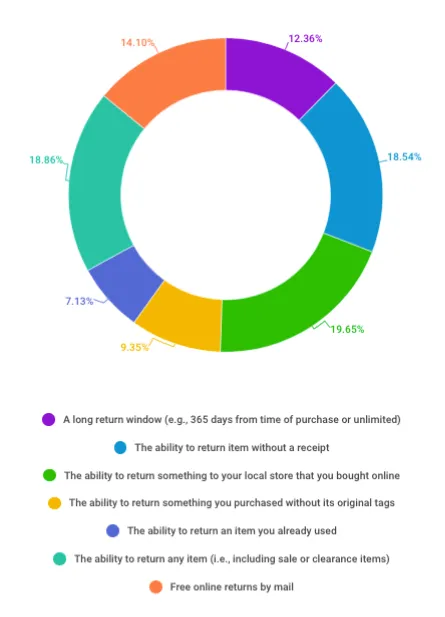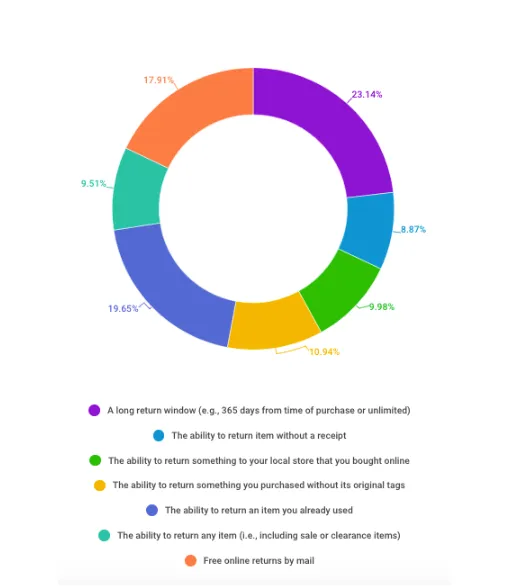Table of contents
Everybody knows that customers shop to get the most for their money, but the bargains and perks they seek out can extend as far as your return policy. In fact, 74% of people in a recent Square survey said that a flexible return policy was “very” or “extremely” important in their decision to buy from a retailer. The survey — which asked 1,800 shoppers in the U.S. how they discover, choose and recommend businesses — also found that 42% would only be “somewhat likely” to try a retailer if they knew it didn’t offer a store return policy that suited their needs.
So how can you create return policies that appeal to your target audience? For one, our results showed that a feature many people look for is the ability to buy online and return in store. And Gen Zers, millennials and Xennials gave bonus points for retailers who accepted returns without a receipt.
Here are the results in full:
When it comes to having a customer-friendly return policy, which of the following would you say is most important?
When it comes to having a customer-friendly return policy, which of the following would you say is least important?
There are useful learnings here, but some of the numbers aren’t quite what they seem. Whilst widening the return window was rated of least importance, the University of Texas-Dallas found in a study that stores offering more time to return, whilst refunding a larger percentage of the original cost, were the most effective at increasing overall sales.
These discrepancies highlight why it’s so important to create a return policy that suits your unique target audience. Here are a few steps you can take to make sure it does:
Do your research
Before you design your return policy, ask your customers what they’d like to see — there’s nothing more powerful than doing your research at the very source. What do they look for when they shop, and what would make them choose you over someone else?
You should see what your competitors’ policies look like, and aim to meet or exceed them. There are also many studies on return policies that can give you a general idea of what people like and dislike.
Set the standards
Create a documented outline of what returns you accept, the condition they must be in, where they can be returned and the timeframe (if any) in which they must be returned. These points should be communicated clearly on the ‘Returns’ section of your website, on your product pages and also in-store.
Let the world know
After you’ve designed your return policy, make sure new and existing customers find out about it. You can use social media, email marketing and store signage with a bold promotional message to tell them why your policy is so good.
And be specific. There should be no question in their minds as to what they can and can’t return, and they’ll want to know whether you offer money-back refunds or store credit.
Your store’s return policy has an impact on how people perceive your approach to customer service as well as your brand. With more shoppers looking for convenience and flexibility, there’s never been a more important time to ask them how you could change your approach. By offering a tailored shopping experience that fits customers’ needs, you’ll find more of them choosing you over your competitors.
![]()













